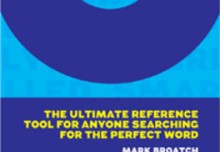There’s now a word for the kind of AI writing that at first glance looks good, but when you read it properly – when you truly try to understand what it’s saying, and how it can help you – you realise it doesn’t help at all. That word is “workslop”.
It was coined by the researchers of a new survey by Stanford and BetterUp Labs that reveals 40% of US desk workers received workslop during the previous month. Quite frankly, I’m surprised the number is that low. But even at 40%, this workslop will cost a 10,000-person company US$9 million in lost productivity, according to the survey. After all, it’s not just the time wasted by reading the slop – the reader then also has to do the thinking and work that the sender of the slop was supposed to do in the first place.
It’s ironic AI is being touted as a time saver when – as common sense would dictate – it’s so often doing the opposite. As I’ve said before, and I’ll say again, communication is a human endeavour. Asking a machine that’s trained on the slop of others to churn out something insightful and helpful doesn’t make sense. It just churns out more slop.
So why do employees use it? A common reason I come across is they’re just not confident about their writing and feel AI will do a better job.
Which is also ironic, as the BetterUp survey also showed that people are far more likely to think less, not more, of someone who’s sent them workslop. Which, yet again, is not surprising.
And none of this is necessary. Anyone can improve their writing dramatically. Anyone can write better than AI. Much, much better. The worst writers I’ve ever come across can write better. As people learn in my workshops, it’s not that difficult to do.
Some use AI for a first draft, thinking it will give them a push: but instead, it sends them down the wrong path. After all, unless you’re trying to churn out something that’s already been done countless times before, the first draft requires critical thought – and AI is not capable of anything approaching that. That’s why AI copy so often repeats the same point again and again, all in different ways: it doesn’t know what it’s doing.
So if AI can’t be used for a first draft, can it be used to edit work?
No.
Aside from anything else, it doesn’t know what’s interesting to the reader, so it doesn’t know how to structure a sentence, much less a paragraph or a whole article.
Writing and editing requires making countless decisions, and AI is not equipped to make a single one of them: because each one requires judgement.
At best, AI is a tool, albeit one that chews through so much water and energy that the environmental impact is horrifying (here’s one fun fact: demand for fresh water is likely to exceed supply by a whopping 40% by the end of this decade alone).
You can use it judiciously, such as for research (provided you verify and check everything it comes up with), or to convert complex phrases into plain English (which I must admit, it can do pretty well) – but I would never, ever, use AI for my own writing.
It slows me down, its generic and repetitive, and I like my writing to sound like me.
Finally, it’s the act of writing and editing that delivers insights. It’s only as you write that you start to think of new ideas and points you want to add; it’s only as you edit that you truly begin to understand what you need to question or focus on more, and what you need to cut.
Writing and editing is about thought: it’s not a process that can be automated. Or, to be more precise, it can be automated – but the output will be workslop.




